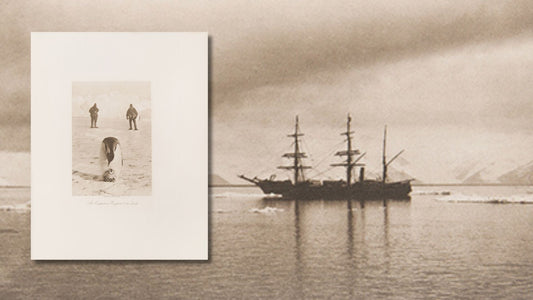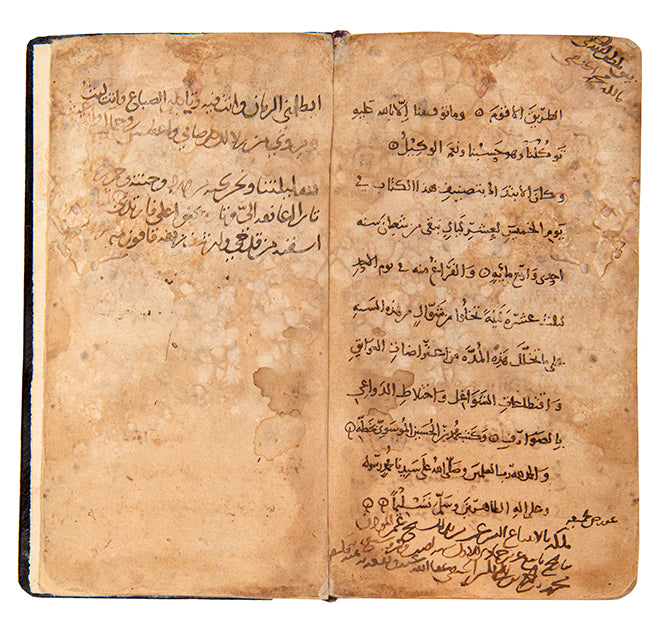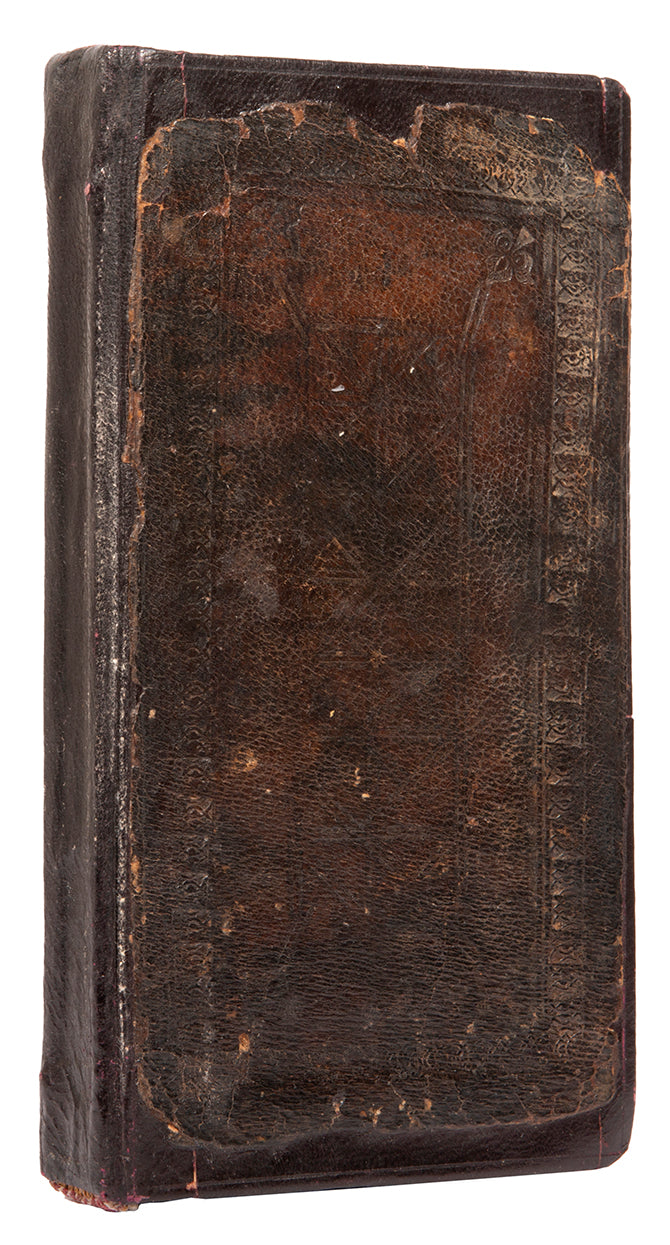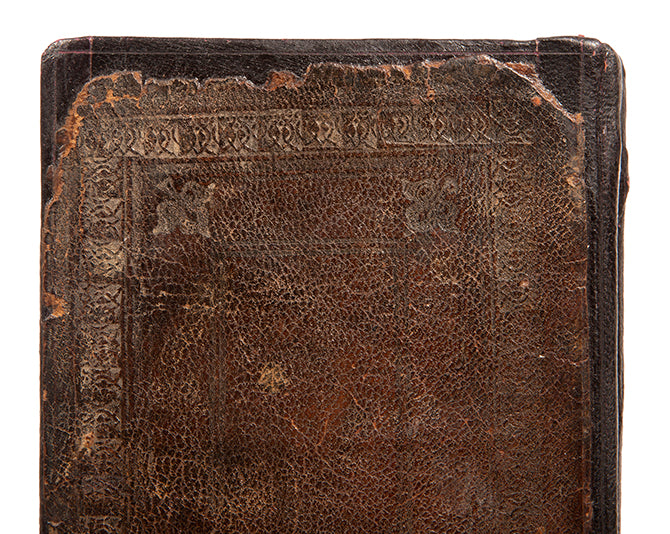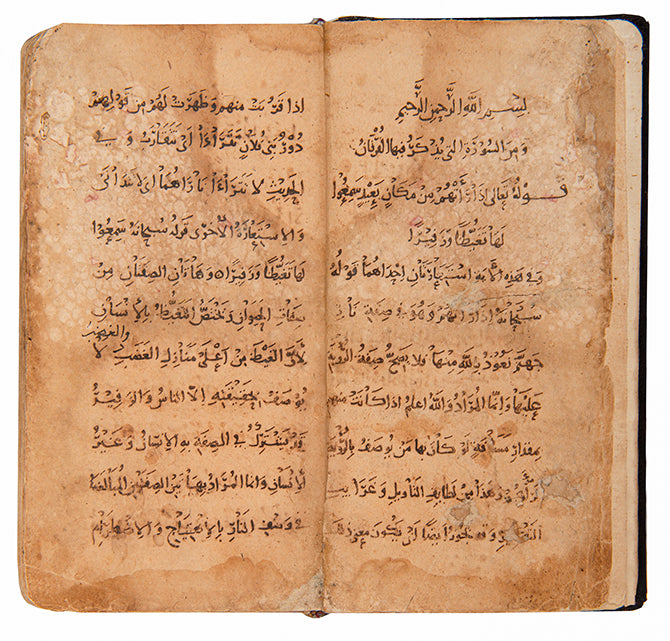AL-MUSAWI, Abu-Hassan Muhammad ibn al-Husayn (known as al-Sharif al-Radi).
Takhlis al-Bayan fi Majazat al-Qur'an, or 'Mujazat al-Radi',
Takhlis al-Bayan fi Majazat al-Qur'an, or 'Mujazat al-Radi',
copied in the hand of the author, second volume only.
Stock Code 106052
Bayid Persia (Baghdad), dated 13 Shawwal 401 AH (1010 AD).
The author's own copy. Perhaps the exemplar from which all other extant witnesses descend. As the colophon states, it was written by the author himself and completed on 13 Shawwal 401 AH in Baghdad, the capital city of one of four principalities of Bayid/Buyid Persia. It adds that that he began compiling the work on 10 Sha'ban 401 AH, confirming earlier academic theories on the subject (these based on his mention of his father in a laudatory context suggesting he had just died; his father died in 400 AH/1009-1010 AD). Its date agrees so closely with that established for a crucial lost manuscript of another of his works, that we might infer that in the last years of his life the author surrounded himself with like minded scholars and scribes, producing the final and authorised copies of his numerous works (the other work is that of a Qur'an commentary written in ten volumes in 402 AH by a scholar who then read it to the author, but with only volume five of the set surviving to at least 533 AH when it was copied along with its colophon into a manuscript subsequently recorded in the Imam Reza shrine in Mashhad from where it was copied and published by Mirza Husayn Nuri: see I.J. Boullata, Literary Structures of Religious Meaning in the Qu'ran, 2000, p. 300). This is perhaps the sole autograph from that period of intense book production to survive. Baghdad had been an important literary centre since the ninth century AD, and when the Bayid/Buyid dynasty came to power in the mid-tenth century AD it was the second largest city in the world, bested only by Constantinople. It had a vibrant bookish and scholarly culture from its earliest days, with records of a private library there in the ninth century so vast that needed 120 camels to move it from one site to another. By the mid-thirteenth century AD, on the eve of the destruction of the city by the Mongol Hordes, Baghdad had thirty-six public libraries and over a hundred book dealers, who in turn employed a small army of book copyists. The present manuscript comes from the early part of this timespan, from the period of intellectual renaissance and flowering of study under the patronage of the cultured Bayid dynasty who 'valued culture and science as ornaments and expressions of power' and who 'collected intellectual luminaries like jewels in a diadem' (see J.K. Kraemer, Humanism in the Renaissance of Islam: the cultural revival during the Buyid Age, 1992, especially pp. 46-60, at p. 53).
Later historical sources record that in the aftermath of the Mongol attack on Baghdad in 1258, following the execution of the ruling elite and much of the population there followed by seven days of looting and razing of its most important buildings. As part of this, it is reported, the Mongols went on to build stables from discarded books instead of bricks, and that the Tigris could be ridden across on horseback as so many of the city's books had been flung into it. Earlier sources, such as Ibn Taymiyyah (d. 1328) note that Nasīr al-Dīn al-Tūsī, an astrologer in the service of the Mongolian khan, Hulagu, 'took possession of the people's books, the endowments, and land', destroying those created for the study of Shia Islam. This volume may have survived due to it being outside of Baghdad during the destruction, perhaps already in Hillah.
The details given in the colophon of this codex are solidly supported by both a C14 test (by CIRAM -Science for Art Cultural Heritage of Martillac, France and New York, their report reference 0415-OA-98R-4 carried out in 2015, with them extracting the sample of paper from the book themselves: strip of paper from blank lower edge of fol. 10), as well as a report on the antiquity of the paper stock by Helen Loveday. The C14 analysis establishes a date of 986-1048 AD with a probability of 79.1%, and the paper stock is characteristically Persian and of the twelfth century or before (the extreme rarity of comparative eleventh-century manuscripts from this region forcing the dating parameters to be set as 'twelfth-century or before').
Single volume, second volume only of the text, decorated manuscript in Arabic, complete in alternating quires of 8 & 12 leaves with a bifolium at the end to complete the text, 162 leaves (plus one contemporary and 3 later endleaves), 218 x 118 mm; single column of 11-12 lines in sepia naskh hand of the author al-Sharif al-Radi himself, title on recto of first leaf, colophon at end of text in same hand, on distinctively Persian dark-cream paper, most leaves with mould markings (of 7-8 laid reed lines per centimetre, and with no chain lines apparent), final free endpaper with numerous ownership inscriptions (pre-fourteenth century), occasional marginal commentary (also pre-fourteenth century), some early damp-staining and mottling to leaves to entirety of volume affecting upper and outer corners, a few repairs to preliminary leaves including a closed tear to first leaf, strip of modern paper pasted along length of pastedown (probably from modern description once pasted there and subsequently removed), later endpapers and doublures inserted; fourteenth-century leather boards, stamped in blind and ruled with geometric patterns, skilfully rebacked, resewn and edges repaired, very presentable and attractive condition.
Couldn't load pickup availability
Provenance
Provenance
Delivery
Delivery
We offer secure and express delivery on all local and international orders of rare books, maps and prints placed through this website.
About us
About us
Shapero Rare Books is an internationally renowned dealer in antiquarian & rare books and works on paper.
Our Bookshop and Gallery can be found in the heart of Mayfair at 94 New Bond Street, where most of our stock is available to view and on public display.
We exhibit at major international art fairs, including TEFAF (Maastricht and New York), Frieze Masters, Art Miami and Masterpiece London, as well as antiquarian & rare book fairs including New York, Paris, London, Los Angeles, San Francisco and Hong Kong.







